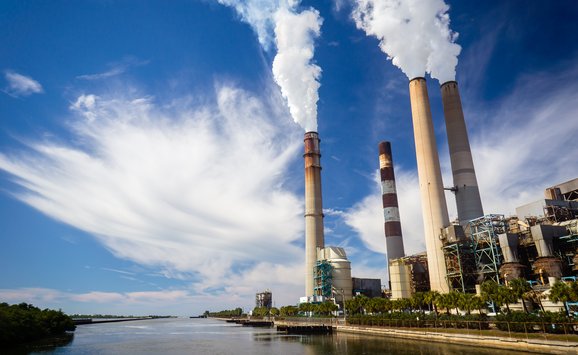Each week, we’re compiling the most relevant news stories from diverse sources online, connecting the latest environmental and energy economics research to global current events, real-time public discourse, and policy decisions. Here are some questions we’re asking and addressing with our research chops this week.
Natural gas companies are confronting potential bankruptcies, which may lead to growing numbers of abandoned wells. What options exist to properly decommission these wells?
As fossil fuel companies struggle with fluctuating oil prices and an unstable global economy, more are declaring bankruptcy—and leaving behind unplugged natural gas wells that, unplugged and unattended, continue to emit methane. According to a recent analysis of bankrupt American energy companies’ finances, companies rarely set aside money to clean up wells in the event of economic hardship, nor do they use their few remaining dollars to mitigate environmental risks. As Whiting Petroleum pays corporate leadership $14.6 million, just days before filing for bankruptcy, and Diamond Offshore Drilling uses the $9.7 million it earned from the coronavirus stimulus bill to compensate top executives, energy giants expose challenges with how the United States regulates gas companies and manages wells. The often steep cost of plugging these wells has long daunted policymakers. But as the problem spreads, legislators are floating the idea of a federal program to fund well cleanup—potentially offering environmental benefits and support for gas workers burdened by the economic crisis.
In a new report, RFF Senior Research Associate Daniel Raimi and coauthors find that such a program could generate as many as 120,000 jobs—providing opportunities for the 76,000 oil and gas workers who have recently been laid off. While they caution that a federal program would be administratively complex, given varying state regulations and uncertain cost estimates, the authors note that plugging wells would reduce greenhouse gas emissions at a cost “well within the range of other policy options.” Their research also highlights the environmental hazards of neglecting these unplugged wells, which emit more greenhouse gases annually than all power plants combined in many states—the equivalent of about 2.1 million passenger cars. As Raimi makes clear, “Funding a program to plug large numbers of orphaned and abandoned wells offers the rare chance for a ‘win-win’ that can provide short-term economic stimulus … while also reducing climate change.”
Related research and commentary:
- Report: Green Stimulus for Oil and Gas Workers: Considering a Major Federal Effort to Plug Orphaned and Abandoned Wells
- Public comments: Virtual Forum on Reclaiming Orphaned Oil and Gas Wells: Creating Jobs and Protecting the Environment by Cleaning Up and Plugging Wells
- Blog: The Potential for Plugging Abandoned Wells as Green Economic Stimulus

Can Ethiopia, Egypt, and Sudan reach an agreement on the controversial Grand Ethiopian Renaissance Dam?
The leaders of Ethiopia, Egypt, and Sudan have resumed talks on one of the region’s most divisive contemporary issues: the Grand Ethiopian Renaissance Dam. The massive Ethiopian hydropower project along the Blue Nile is nearing completion, but downstream nations have concern that the dam will disrupt the flow of the river. Political leaders in Egypt—which derives around 90 percent of its water resources from the Nile—have labeled the dam an “existential threat” and have even discussed the potential for military action. Sudan, which lies between Ethiopia and Egypt, has staked out a more nuanced position, as the dam carries both positive and negative potential for agriculture and electricity in the country. Previous talks between Ethiopia, Egypt, and Sudan over the future of the dam have ended without a substantive agreement, but Ethiopian Prime Minister Abiy Ahmed has recently claimed that the countries have come to a “major common understanding.”
This week on a new episode of the Resources Radio podcast, Annalise Blum takes a close look at the geopolitical ramifications surrounding the dam, along with related environmental and natural resource implications. A policy fellow with the American Association for the Advancement of Science, Blum emphasizes the size of the Grand Ethiopian Renaissance Dam, which will be the largest source of hydropower in Africa once complete and could double Ethiopia’s energy producing capacity. Blum also notes that “Ethiopians feel the dam is essential to moving a lot of the country out of poverty” and that the construction has the potential “to unify different ethnic groups” across Ethiopia. However, reduced water flow could present problems for Egypt and Sudan, especially during droughts. Negotiations become difficult amid these conflicting interests, and as tensions rise, Blum states that, “at this point, really any agreement would be a good one.”
Related research and commentary:

How is the current administration approaching economic considerations when repealing key methane regulations?
As part of an ongoing lawsuit against the US Environmental Protection Agency (EPA) by 15 state attorneys general, emails from the Trump presidential transition were made public this week, including correspondence between EPA officials and industry leaders that provides context for the administration’s repeal of regulations that require oil and gas companies to collect data on methane emissions. Notably, the timing of the repeal came soon after a lobbyist emailed EPA in support of a possible policy shift. Pointing to these emails, the states suing EPA contend that the administration rescinded methane data requirements without sufficient justification, rather than basing regulatory decisions on rigorous internal analysis. The administration has frequently faced legal scrutiny for its approach to environmental regulations, with methane rules a frequent source of disagreement. Just last week, a district court judge found that the Bureau of Land Management “failed to consider scientific findings” and unlawfully “engineered a process to ensure a preordained conclusion” when it repealed rules governing methane emissions on public lands.
That court’s rejection of the administration’s attempted repeal is the subject of a new blog post from RFF Senior Fellow Alan Krupnick. Looking closely at both the administration’s attempted rule changes and the subsequent court decision, Krupnick assesses how the federal government and the district court considered economics in their decisionmaking. While broadly tracking the court’s logic for rejecting the repeal, Krupnick elaborates on why the Bureau of Land Management’s attempted redefinition of “waste” was more than just procedurally problematic, and contends that the economics debate over calculating the social cost of carbon is more nuanced than the court suggests. “The court’s order … has some errors of commission and omission regarding its economic reasoning,” Krupnick writes. “Even so, these errors should not detract from the court’s legal reasoning or the identification of procedural failures that have led to the court's ruling.”
Related research and commentary:








